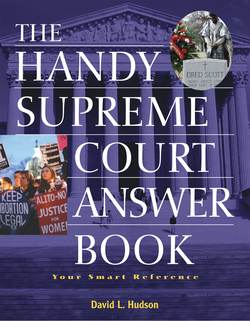Читать книгу The Handy Supreme Court Answer Book - David L Hudson - Страница 63
На сайте Литреса книга снята с продажи.
What is the importance of circuit splits?
ОглавлениеEven experienced Court observers warn there is no way to predict with great accuracy when the U.S. Supreme Court will agree to hear a case. However, one of the best predictors is when a case presents an issue that divides the lower federal appeals courts. This is called a circuit split. Rule 10(a) of the Rules of the Supreme Court identifies as an important consideration when a federal appeals court decision conflicts with another federal appeals court decision.
For example, in 2005 the U.S. Supreme Court heard the case of Cutter v. Wilkinson to determine the constitutionality of a federal law called the Religious Land Use and Institutionalized Persons Act (RLUIPA). The high court agreed to hear this case in part because the Sixth U.S. Circuit Court of Appeals had ruled the act violated the Establishment Clause of the First Amendment. Several other circuits, including the Fourth, Seventh, and Ninth, had ruled that RLUIPA did not violate the Establishment Clause. The U.S. Supreme Court took the case to resolve the circuit split on the constitutionality of this federal law, which it did by upholding the law.
CourtSpeak: The Discuss List
On September 27, 2001, in a lecture at the University of Guanajuato in Mexico, Chief Justice William Rehnquist spoke about the Court’s discuss list: “Shortly before each conference, I send out a list of the petitions to be decided during that conference that I want to discuss. Each of the other Justices may ask to have additional cases put on the ‘discuss list.’ If at any particular conference there are 100 petitions to be decided, there may be anywhere from 15 to 30 that are on the discuss list. The petitions for certiorari that are not discussed are denied without any recorded vote.”
